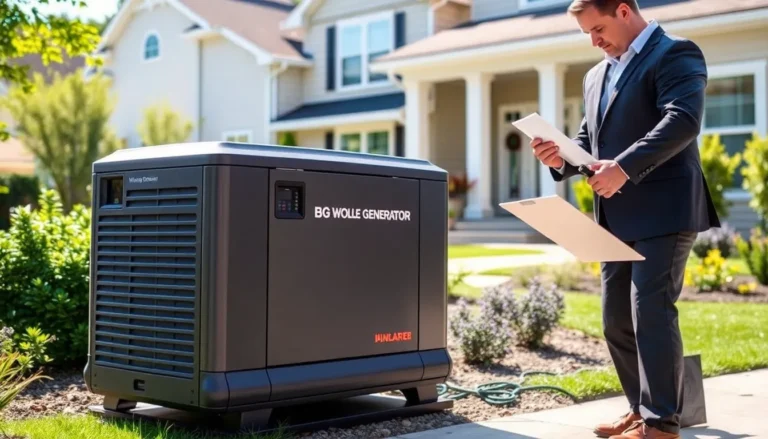Picture this: a cozy Saturday at home, a warm cup of coffee in hand, and then, BAM. You hear a drip, drip, dripping sound that makes your heart sink faster than a led balloon. Roof leaks can be a homeowner’s worst nightmare, but fear not. With proper home roof maintenance, those nightmares can be kept at bay. This guide will enlighten you on everything you need to know about maintaining that vital protective shield over your head, ensuring it stays strong and reliable. Let’s immerse, shall we?
Table of Contents
ToggleUnderstanding the Importance of Roof Maintenance

The roof is like the crown of your home: it protects everything underneath it. Ignoring roof maintenance can lead to serious headaches, both literally and figuratively. A well-maintained roof not only extends the lifespan of your home but also helps prevent water leaks that can cause substantial interior damage. Think of your roof as a protective barrier. Investing time and effort into its upkeep can save thousands on repairs in the long run. Also, in the age of rising energy costs, a well-maintained roof can contribute to better energy efficiency, keeping your home comfortable without very costly.
Common Signs of Roof Damage
Recognizing signs of roof damage early can help homeowners nip potential problems in the bud. Look out for cracked or missing shingles, which can expose your roof to the elements. Another common indicator is discoloration or sagging areas: both signify water damage that should not be ignored. If you notice moisture stains, particularly in your attic or around flashing points, it’s time to take action. Also, granules from shingles collecting in gutters may point toward deterioration. Remember, not all heroes wear capes: some just carry a flashlight to check beneath the eaves.
Seasonal Roof Maintenance Checklist
Keeping a seasonal checklist can help simplify roof maintenance tasks. Here’s a rundown to guide you:
Spring:
- Inspect Shingles: After winter, check for any damage caused by snow or ice.
- Clear Debris: Remove leaves, branches, and other debris from the roof surface and gutters to promote proper drainage.
- Check for Moss or Algae: Apply a moss killer if necessary, as these can degrade roofing materials.
Summer:
- Inspect Flashing and Seals: Examine roof penetrations for wear and ensure that seals around vents and chimneys are intact.
- Clean Gutters: While this isn’t exclusive to summer, consistent cleaning will serve your roof well in preparation for storms.
Fall:
- Prepare for Winter: Inspect and repair any damage promptly.
- Trim Overhanging Branches: This helps prevent damage during strong winds and reduces debris on the roof.
Winter:
- Check for Ice Dams: If snow accumulates, it can melt and refreeze, causing ice dams. Address these with proper insulation techniques.
Tips for DIY Roof Maintenance
DIY roof maintenance can be rewarding, but safety must always come first. Here are some handy tips:
- Always Use Safety Gear: A sturdy ladder, a harness, and non-slip shoes are essentials.
- Perform Regular Inspections: Use binoculars for a distant view of your roof if climbing it isn’t feasible.
- Address Small Issues Immediately: If you spot missing shingles or a small leak, tackle those repairs promptly to avoid larger problems later.
- Know Your Limits: If a task seems daunting or unsafe, don’t hesitate to leave it to the pros.
When to Call a Professional
While some tasks are quite manageable for the average homeowner, others require professional expertise. If your roof is older than 20 years, it might be time for a professional assessment. Also, if extensive damage or multiple leaks appear, calling an expert is wise. Whether it’s a full replacement or significant repairs, professionals can offer warranties and expertise that ensure peace of mind. Finally, if you’re uncomfortable working at heights or the job demands specialized equipment, opt for professional help to avoid injury.
The Benefits of Regular Roof Maintenance
Regular roof maintenance offers a wealth of benefits that go beyond mere aesthetics. Firstly, it prevents costly repairs, preserving the integrity of your home. Also, a roof in good shape can enhance market value: prospective buyers appreciate a well-maintained property. Energy efficiency also improves, as a solid roof ensures insulation integrity and minimizes heating and cooling demands. Finally, maintaining your roof can lead to safer living conditions by reducing hazards associated with leaks and mold growth. In short, the time and effort invested pay off in multiple ways.


